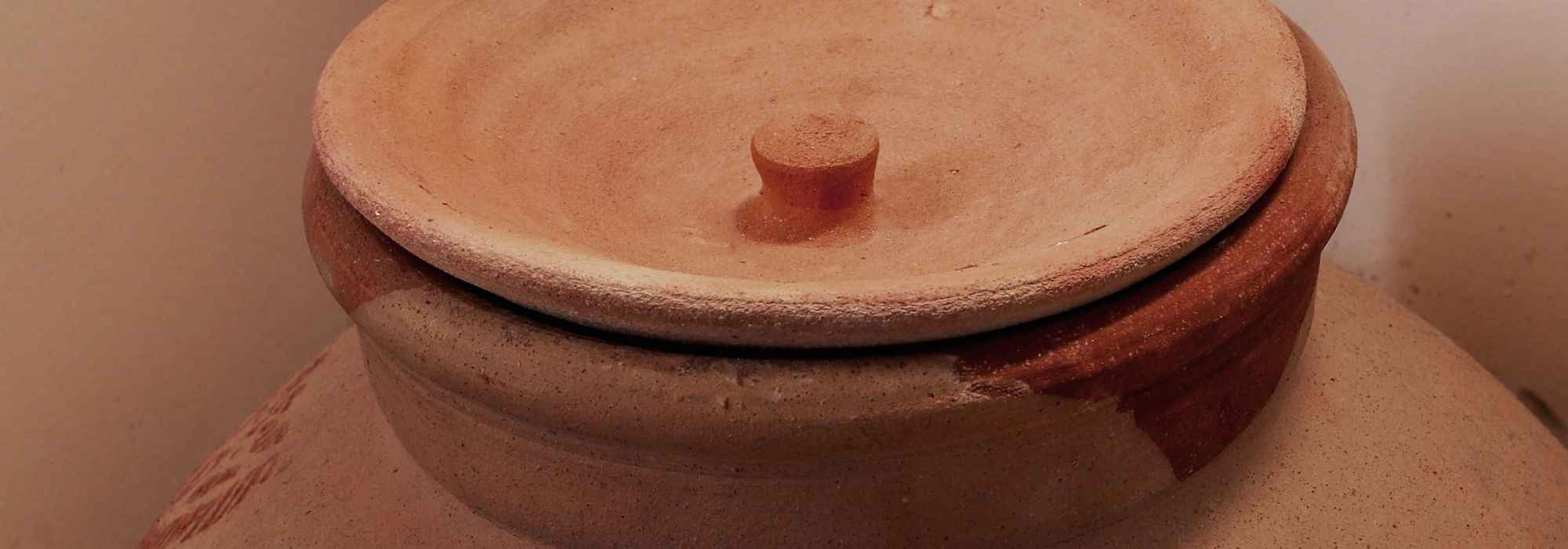
Ollas or oyas: an efficient and economical watering system
Everything you need to know about these irrigation pots to use them effectively.
Contents
We are hearing more and more about ollas or oyas. Already used in ancient times, these buried or planted irrigation systems have multiple advantages. They are more economical, ecological, and efficient than most current traditional watering systems.
Ollas or oyas can be used in the vegetable garden, ornamental garden, in greenhouses, or for potted plants.
Whether purchased or homemade, let’s explore how they work and how to use them effectively in the garden for efficient watering.
→ Discover our tutorial on how to make a homemade olla to water the garden.
Ollas or oyas: what are they?
Ollas are not a modern invention, as they have been used for several thousand years, dating back to ancient Rome. Their name means “pot” or “cooking pot” in Spanish, and they are essentially just water reservoirs.
The name oyas, also commonly encountered, refers to a registered trademark that offers watering pottery based on the olla system.
An olla is therefore a method of irrigation that works through containers either buried or placed near plants, allowing them to meet their water needs. Made from clay or microporous ceramic, they allow water to diffuse gradually through capillarity as the substrate around them dries out.
Ollas always have a lid or removable top, which ensures easy filling. This lid also limits water evaporation and prevents the entry of foreign bodies, insects, leaves, etc.
The roots of the plants will then naturally develop near the ollas and draw the water they need.
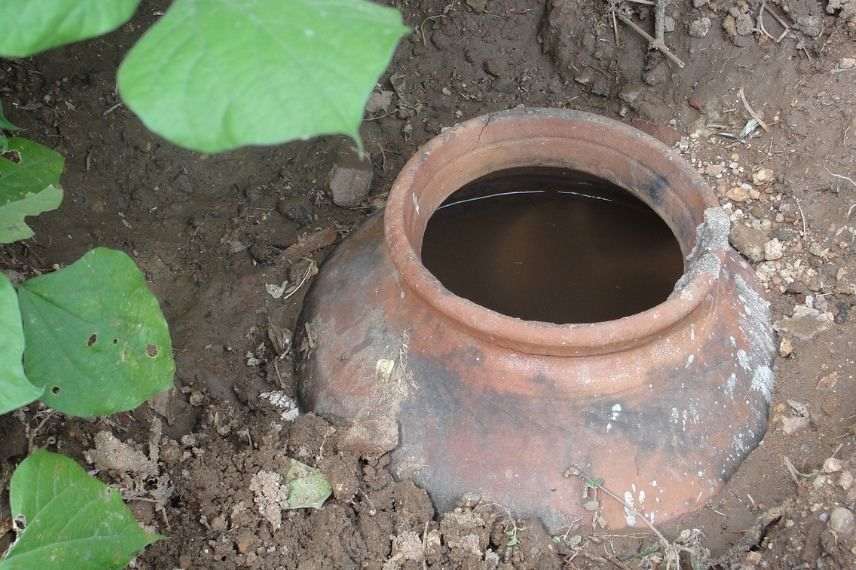
Irrigation jar (photo Thamizhpparithi Maari – Wikimedia)
Read also
Watering the garden: how to do it?Why use ollas to water your plants?
9 Benefits of Ollas in the Garden
If ollas have gained so much popularity in recent years, it’s because they are efficient watering systems with numerous advantages. Let’s explore 9 good reasons to adopt them in the garden.
- Targeted watering without water stress: water gradually diffuses close to the roots of the plants, gently and consistently. This deep watering, rather than surface watering, also limits the development of adventive plants (“weeds”).
- Reduction of thermal shocks: the watering water within the olla warms up and adapts to the soil temperature by slowly nourishing the plants, thus avoiding any significant temperature fluctuations.
- Healthy plants: this gentle watering method significantly improves plant vigour and autonomy, allowing it to develop its roots deeply and draw water independently. This system also reduces the risk of developing diseases, as the foliage of sensitive plants, such as the tomato with blight, is not wet during watering. Finally, it may even affect the taste of vegetables, which are much less waterlogged.
- An autonomous system for several days, or even weeks, depending on the climate and the size of the ollas.
- Time-saving: watering is quick, without time constraints. There’s no need to wait for the extremes of the day to avoid evaporation.
- Water savings compared to traditional watering. The watering is targeted so that the plant benefits from all the water intended for it. Evaporation is limited, if not non-existent, especially if the ollas are paired with a surface mulch.
- An ecological solution: beyond water savings, ollas are made from natural materials (clay or ceramic), without toxic or harmful substances for the environment.
- Great adaptability to all types of gardens and soils: ollas work well in both clayey and poor soils. In sandy and stony soils that drain quickly, they prevent watering water from being wasted by flowing too quickly downwards. Conversely, in heavy soils, they avoid the risk of water pooling around the roots. The system also adapts to the weather: in case of rain, if the soil is already moist, the olla will retain its water until drought returns.
- Lastly, a somewhat trivial but still notable argument in their favour: these systems are quite aesthetic (much more so than a traditional hose!). They add a natural touch that can be very discreet, and some versions are even beautifully glazed or decorated.
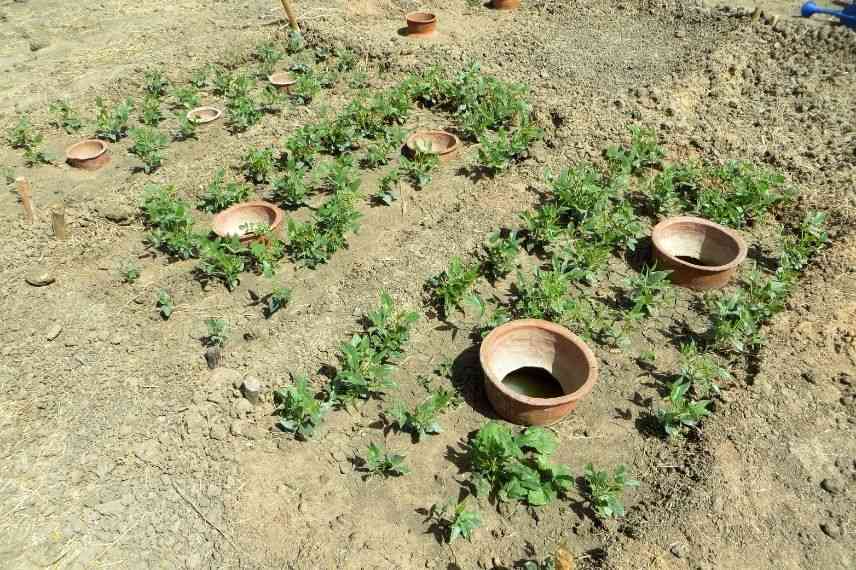
(photo Pauline Samain – Wikipédia)
Disadvantages of this Watering System
After this long list of advantages, let’s discuss some of the drawbacks inherent to using ollas or oyas in the garden.
Even though there are models of varying sizes, the diameter of the ollas requires a minimum amount of space and undeniably reduces the available planting area. It’s ideal to consider their placement ahead of planting, which will also prevent damaging the roots of the plants during installation.
In the case of sowing, surface watering while waiting for the first shoots to germinate will still be essential.
Depending on the area to be covered and the number of plants to be watered, using ollas can become quite costly. However, without being a skilled DIYer, it is entirely possible to make them yourself on a budget, for example by following our tutorial for small and large ollas.
Finally, the system is not completely autonomous, as the containers need to be refilled regularly, especially during prolonged dry spells. However, they can be perfectly combined with automatic watering systems, such as drip irrigation.
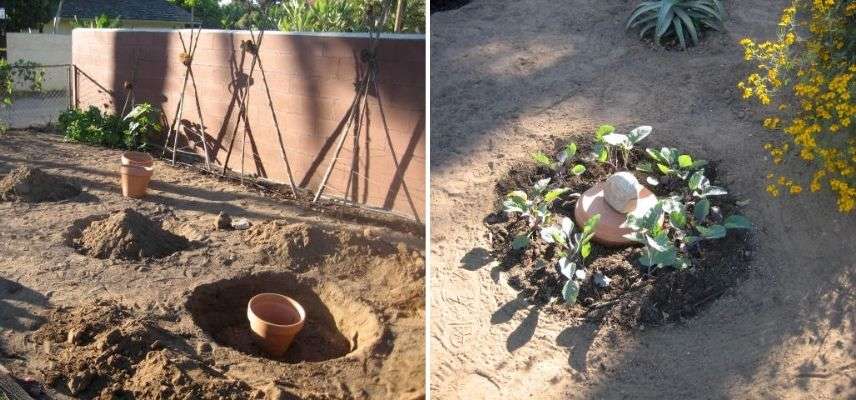
Some gardeners make their own ollas using terracotta flower pots (photo steveilott – Flickr)
How to use ollas or oyas?
Ollas are very easy to use. To do this:
- plant or bury your olla at the base of the plant
- lift the lid, then fill the container with water to the brim
- close it tightly and let the magic happen
How to choose your irrigation pottery?
The choice of ollas depends on the needs of the plants concerned and the area to be covered. A fruit tree will obviously need a larger container than a tomato plant. Conversely, a potted plant can make do with a small olla of less than one litre.
It is also the cultivation method that determines the shape of the ollas. They can be used both indoors and outdoors, in ornamental gardens, vegetable gardens, greenhouses, or in planters. Jar or classic pot shapes for burying are mainly reserved for open ground, while funnel or cone shapes for planting are perfect for pot cultivation.
For which crops?
Ollas are suitable for most crops, but some plant families are exceptions, such as root vegetables, whose growth could be disturbed by the proximity of an olla. This is also true for plants that need their substrate to dry out between waterings and cannot tolerate constant moisture, such as succulents.
Some maintenance tips
To keep your ollas in good working order, we recommend a few simple maintenance steps.
Use clean water to avoid dirtying the walls of the ollas and risking altering their natural porosity. Ideally, prefer rainwater to limit the damage from limescale (or use an anti-limescale for watering water).
Be gentle when using gardening tools near the ollas to avoid damaging them.
Finally, before the arrival of winter:
- dig up the ollas installed in annual crops, to clean them (with black soap, for example) and store them away from frost until the next season
- protect the ollas that remain in the ground (ornamental garden, orchard…) with thick mulch and stop filling them with water to avoid any risk of freezing and cracking.
- Subscribe!
- Contents
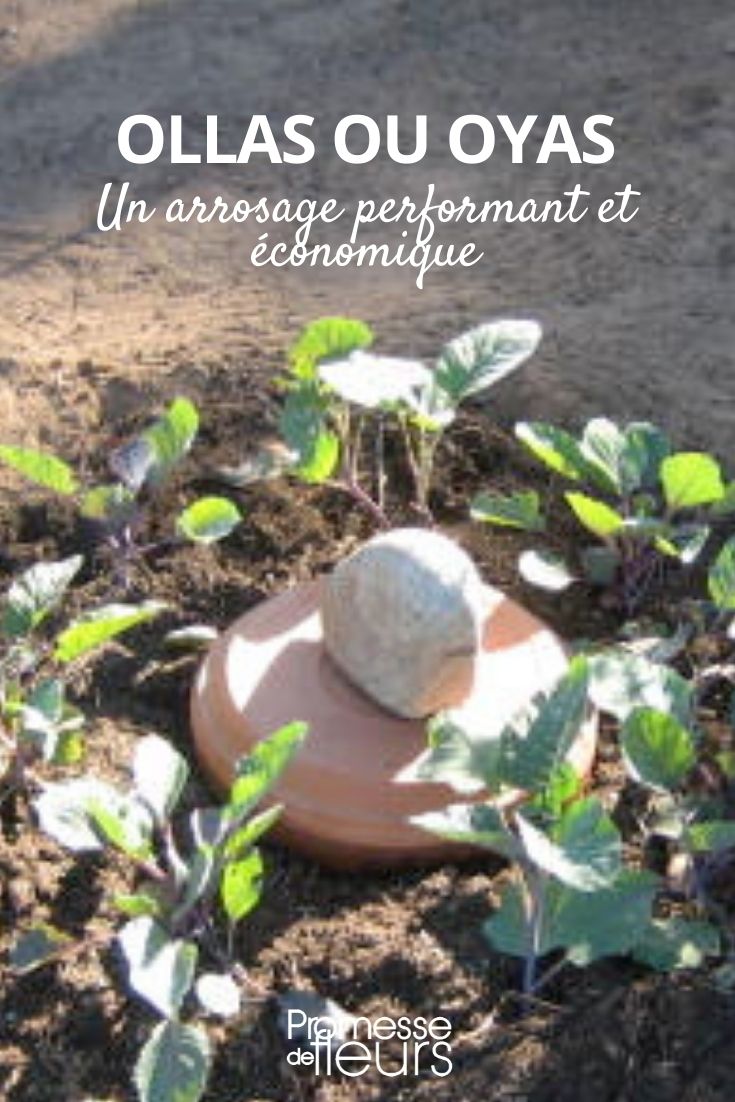






























Comments